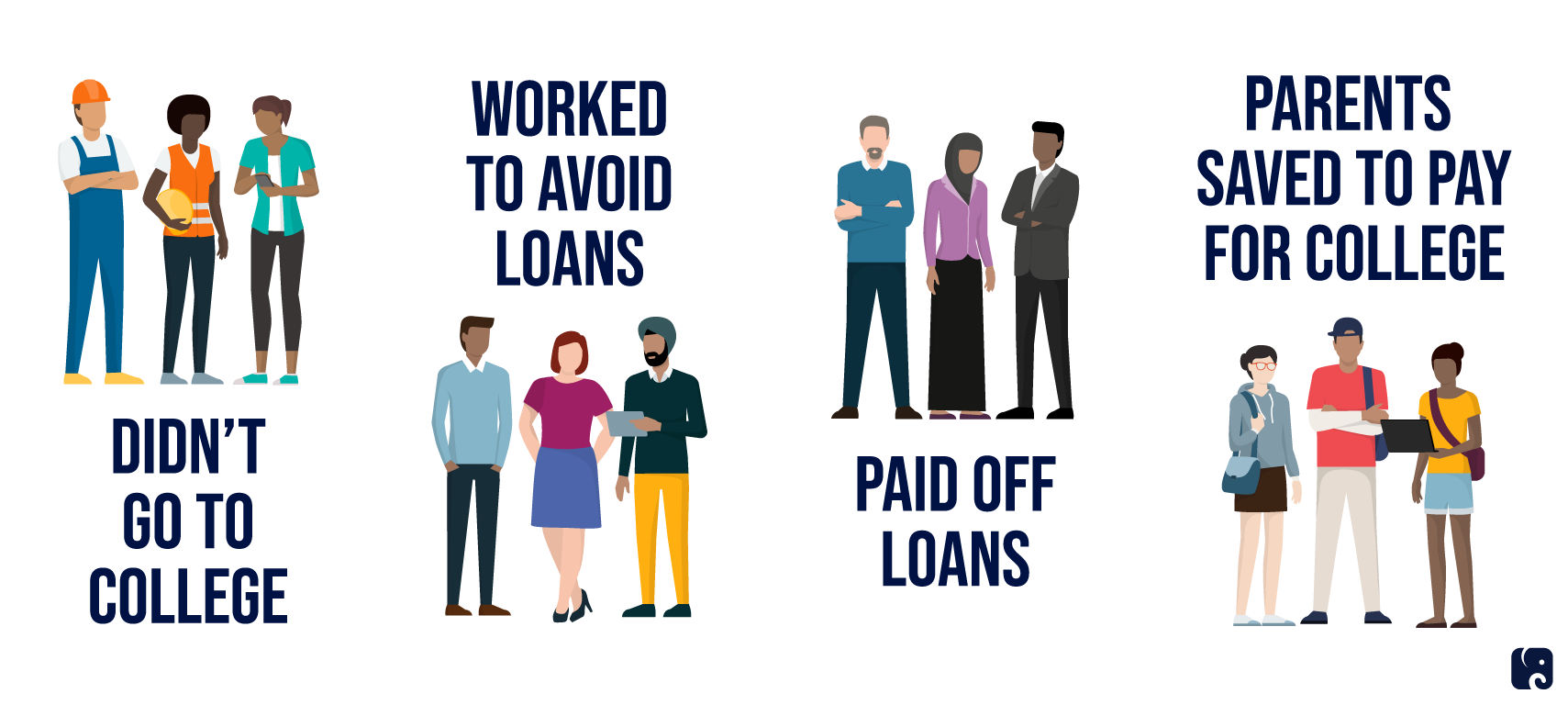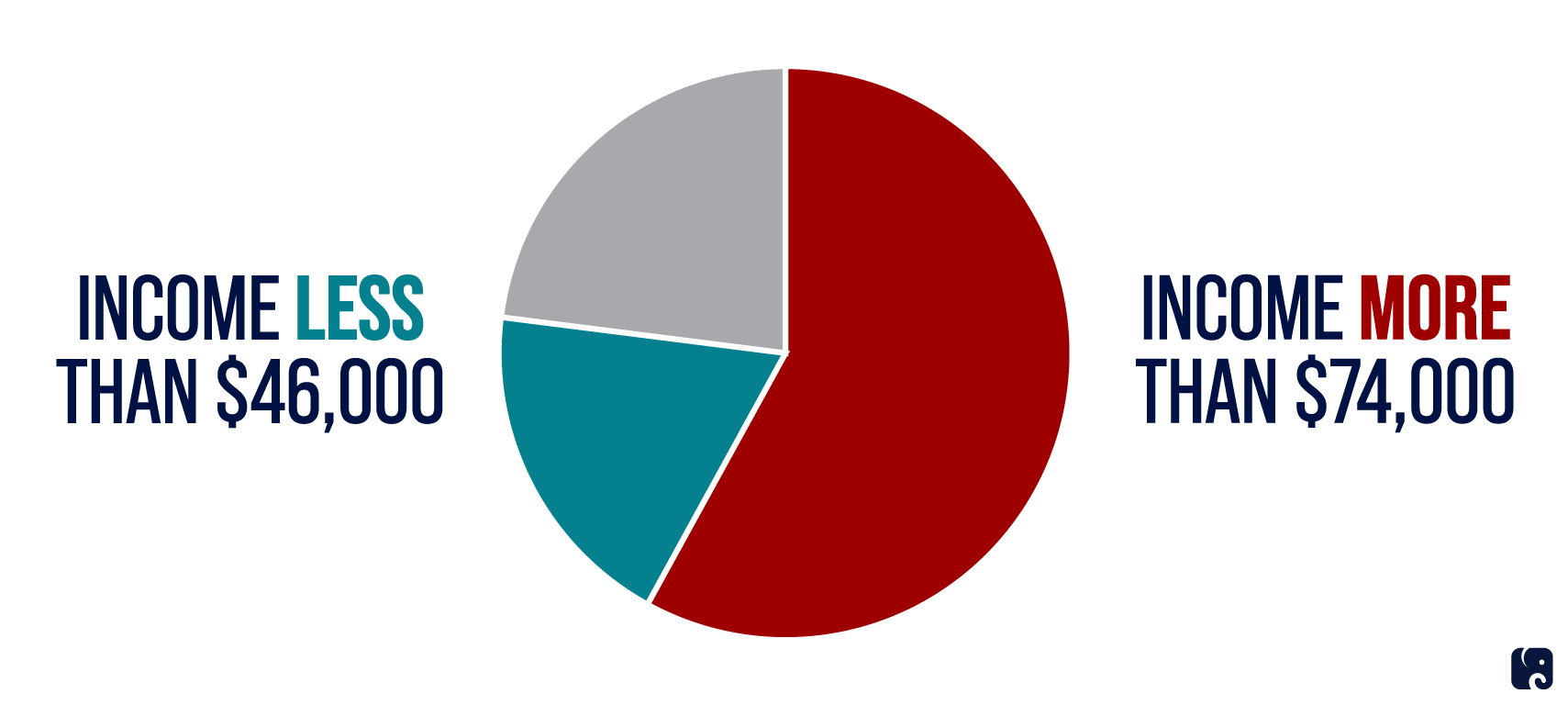Student Loan Forgiveness: A Handout for the Rich
KEY TAKEAWAYS
- President Biden may soon unilaterally forgive federal student debt, with no benefit to the millions of Americans who never went to college, avoided loans, or worked to pay back their debt.
- People with higher incomes hold most of the student debt, and they stand to get the most benefit from mass student loan forgiveness.
- Magically “wiping away” student debt would do nothing to keep college costs and future student debt from rising.
President Biden may soon bypass Congress and unilaterally forgive federal student loans – potentially $10,000 or more per borrower. This was one of his 2020 campaign promises, and Democrats have been ratcheting up the pressure on him to do it by executive action. Millions of Americans would get stuck with the bill for this political giveaway but would get no benefit: 87% of Americans do not have federal student loans. People who did not go to college would get nothing, and neither would those who avoided loans by attending a more affordable college or working during school. The same is true for people who worked and sacrificed vacations and other extra expenses so they could pay off their debt, as well as students who borrow in the future.
Who Gets the Bill, Without the Benefit?

President Biden already bent under pressure from Democrats to keep extending the pandemic pause on federal student loan repayment, even though unemployment has fallen to a near record low of 3.6% and the economy is teeming with open jobs. Anyone with a federally held student loan has not had to make a payment since March 2020, regardless of their ability to repay. According to the Department of Education, the repayment pause is costing $5 billion per month. Instead of helping borrowers transition back to making payments, the Biden administration has chosen to drag out the repayment pause, most recently extending it to August 31.
Now the president may succumb to the latest pressures from the far left to just wipe away student debt. Senator Elizabeth Warren has urged him to do so “with the stroke of a pen.” Democrats’ calls defy the realities of canceling student debt. Experts on the left and the right have said the loan repayment pauses are regressive and inappropriate, and they’ve said similar things about mass loan forgiveness.
who holds the debt?
The way Democrats talk about student loans makes it seem like everyone is saddled with crushing levels of debt. There are 43.4 million people with federal student loans – about 13% of the total U.S. population. Of those with debt, about three-quarters owe less than $40,000, according to the College Board. Just 7% of borrowers owe $100,000 or more, and they account for more than one-third of the outstanding debt.
Share of Student Loan Debt, By Income

Student debt also is concentrated among people who make more money. The Brookings Institution reported that before the pandemic, the bottom 40% of households by income – those making less than $46,000 – held roughly 20% of the education debt. The top 40% of households, which have incomes above $74,000, accounted for nearly 60% of education debt.
Brookings also noted that 56% of debt is held by households that have someone who went to graduate school. This is not surprising, because undergraduate students can only borrow so much from the federal government: $57,500 total for “independent” students and $31,000 for students who are considered dependents. Graduate students are only limited by “the cost of attendance,” which the school determines, not a set dollar amount.
a handout for the wealthy
President Biden and congressional Democrats are fond of saying the rich should “pay their fair share.” Granting widespread loan forgiveness would be an odd way to make this happen, because people with higher incomes stand to benefit the most.
Forgiving $10k in Loans Equals 11 Years of Pell Grants

While Biden has said he wouldn’t forgive all student loan debt, as congressional Democrats have pushed, taxpayers should not breathe a sigh of relief. The Federal Reserve Bank of New York estimates that forgiving $10,000 per borrower would cost $321 billion. That amount of money could fund 11 years of the Pell Grant program – aid that is targeted to help low-income students go to school and doesn’t have to be repaid. More than three in five Pell recipients in the 2020-2021 school year had $30,000 or less in income.
The Biden administration reportedly has considered limiting loan forgiveness to people who earn less than $125,000 or $150,000 per year, though the Education Department told the White House it does not have the income data to carry out this out. The Committee for a Responsible Federal Budget estimates that even with these income limits it would still cost $230 billion or more, and people in the top half of earners would get about 70% of the benefit.
forgiveness risks making things worse
Forgiving student loans by executive action would bypass Congress, something even the general counsel at the Education Department under President Obama said is legally questionable. According to the Wall Street Journal, he wrote a memo saying, “If the issue is litigated, the more persuasive analyses tend to support the conclusion that the Executive Branch likely does not have the unilateral authority to engage in mass student debt cancellation.” In July 2021, House Speaker Nancy Pelosi said the president “does not have that power.” President Biden himself has questioned his legal authority to cancel student loans.
Senate Republicans have introduced the “Stop Reckless Student Loan Actions Act,” which calls out the president’s abuse of statutory authority during the COVID-19 national emergency. The bill would prevent the president from pausing loan payments for higher earners, while allowing for limited suspensions in future national emergencies for lower- and middle-income borrowers. It would also stop the executive branch from canceling student loans due to any national emergency.
Beyond the legal questions, mass student loan forgiveness would do nothing to keep college tuition costs in check, and it would probably drive them higher. Beth Akers of the American Enterprise Institute has explained that mass debt cancellation could create “moral hazard,” where students have the incentive to choose a school and borrow more than they otherwise would because they assume they won’t have to pay back all their debt. Sympathetic politicians in the future could do another round of loan cancellation. Akers argues that it could result in student debt piling up “even more quickly than before.” Last July, the Committee for a Responsible Budget estimated that if $10,000 per borrower were cancelled, total federal student loan debt would be back at its current level in just a few years, and that did not even account for behavioral changes like higher borrowing and higher tuition.
Thanks in part to Democrats’ bad policies, American families are being pummeled by record high inflation at every turn. Rather than advancing policies that lower prices for Americans, Democrats are focused on loan forgiveness handouts that mostly benefit higher earners and would make inflation worse. If there’s one thing the Biden administration should put a pause on, it’s unfair, expensive ideas like this.
Next Article Previous Article
